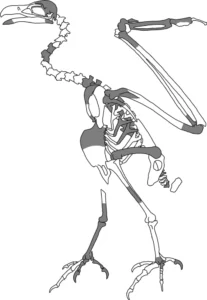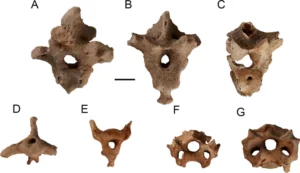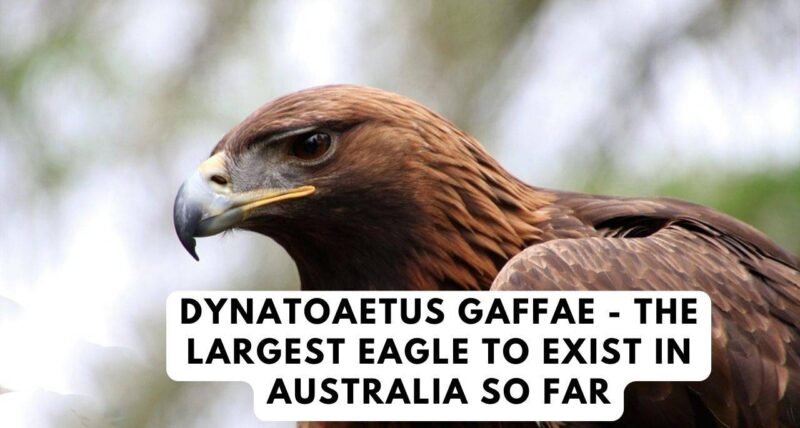The past is full of surprises, and evidence is scattered here and there in bits and pieces. Time and again, historians have discovered such details of history, recreating the life that used to prevail earlier. One such incident occurred in 1956, with the finding of the remains of “Dynatoaetus gaffae – the largest eagle in Australia.” The animal gets its name from a combination of two ancient words from Greece. Dynatós – means strong, powerful, and mighty, while āetós stands for eagle.

Wondering, what made such a discovery stand out from the rest. In that case, the findings listed below will speak for themselves. All you have to do is get comfortable and read through.
Findings: Dynatoaetus Gaffae – The Largest Eagle
Initial excavation of the eagle’s whereabouts dates back to 1956 and 1969, from the Maris Cave of Southern Australia. But the evidence was insufficient to help historians rebuild a past they could explain to the outer world. There were two ungual phalanges, a sternum, and a distal humerus, that the historians could unearth.
Later on, after almost two decades, in 2021, Victoria Fossil Cave, Cooper Creek, and Wellington Caves offered access to 28 further bones. In the list, historians could find vertebrae, the neurocranium, additional wings, and leg bones.
Among the findings, now it was time to decide upon the feeding habit of the birds and how they used to deal with the animals around them. Out of everything, the size of the Dynatoaetus gaffae was quite on the bigger side. This also indicated that the bird had to feed upon proportionately large prey. As per historians, this could also be the reason for extinction. The eagles might have found it hard to cope with the rapid extinction of large prey.
An Overview Of The Dynatoaetus Gaffae – The Largest Eagle In Australia
The Dynatoaetus gaffae resembled accurate similarities with the Circaetinae, Perninae, Aegypiinae, and Gypaetinae. Moreover, scientists found it to be the immediate sister group to the Aegypiinae, based on the DNA data combined from phylogenetic analyses.
For historians, it was all bones at the beginning. But they could identify the bird as a predator and not a scavenger based on the eagle-like morphology of the lower hindlimbs. The size of the bones discovered did elaborate on the size of the Dynatoaetus gaffae. The bird went on outsizing the Aquila audax (modern Wedge-Tailed Eagle).

The team has inferred this eagle as the top terrestrial predator Eagle in Australia to have existed during the Pleistocene. Its area of dominance ranged from the arid inland of Australia towards the more temperate coast. The bird might have gone extinct around 50 Ka during the “megafaunal mass extinction.”
Moreover, the researchers could also join the extinction methodology of the Dynatoaetus gaffae with that of the Cryptogyps lacertosus (scavenging vulture). Thus marking a decline in the organic diversity of the raptor guild in Australia.
On The Eve Of Findings: Narrating The Cave Expeditions From 1956 To 2021
Time and again, the presence of undescribed accipitrid in the Mairs Cave has been elaborated across multiple publications. The notes showed that the bones were not buried deep in the ground and were found lying on the surface floor. The bones were recovered at 55 m from the cave entrance.
It started making more sense when a team of researchers from Flinders University’s recreational speleologists and palaeontologists visited the place, looking for more. They used the recorded location data to find the original site and could decipher 28 bones.
The bones, this time, were scattered all over the place. The team went on to find them amid the rocks with greater layers of calcite deposition.
The Final Clue: Narrating The Cave Expeditions From 1956 To 2021
Combining fragments and building up an entire picture with the right past takes a lot. Being lost in the cave for so many years, it was easy for the remainings of Dynatoaetus gaffae to get lost in the debris. But nature has its way of preserving things meant to be found.
The team came across a fragment of the distal humerus, which they could attach to another part found 50 years back in 1969. And voila! The picture started to make sense. Moreover, on further excavations, the scientists found bones almost intact. Which made it easy for them to proceed toward an assorted past.
The study’s main aim was to offer an elaborate description of the accipitrid species from the Mairs Cave. Which the scientists were able to do. They also went on to find isolated fossils from other sites that could be allocated to the same taxon. Ultimately, the team indulged in a proper study spread across a vast temporal and geographic range.



